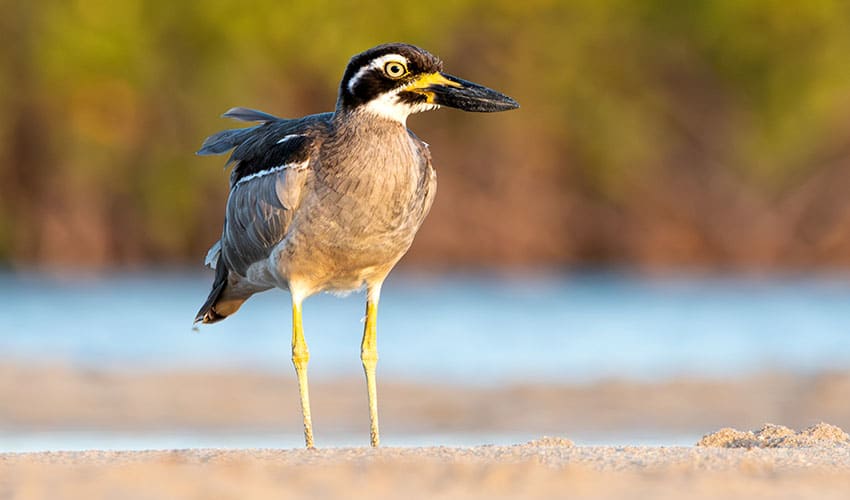One of the most distinctive shorebirds you can spot along sandy coasts and tidal flats in Australia, Southeast Asia, and nearby Pacific islands. Compared to most waders, it’s a big bird with long legs, a chunky body, and an oversized bill that looks almost too large for its face. But what people notice first are its huge, bright yellow eyes, which give it a permanently wide-eyed, slightly startled expression. These eyes aren’t just for show—they’re perfectly adapted for night vision, since this bird is most active at dusk and in the dark.
One of the most fascinating traits of the Beach stone-curlew is its specialized crab diet. While other shorebirds peck delicately at worms or tiny mollusks, the Beach stone-curlew goes for crabs—big ones. It uses its heavy bill like a nutcracker, expertly cracking open shells or hammering away until the meal is accessible. This skill has earned it the nickname “the crab specialist of the beach.” It’s also a patient hunter, often standing still for long stretches before making its move, which makes spotting one feel like catching a statue come to life.
Unlike many social shorebirds that gather in flocks, the Beach stone-curlew is a solitary and shy bird, usually seen alone or in pairs. They are highly territorial, especially during breeding season, and will defend their nesting areas fiercely. Their nests are simple scrapes on the sand, often well hidden, which can make them vulnerable to human disturbance. Because they prefer quiet, undisturbed beaches, they are considered sensitive to habitat loss and are classified as near threatened in many parts of their range. Seeing one in the wild is therefore not just special, but also a reminder of how fragile coastal ecosystems can be.
Distribution
 Australia
Australia Brunei
Brunei East Timor
East Timor India
India Indonesia
Indonesia Malaysia
Malaysia Myanmar
Myanmar New Caledonia
New Caledonia Papua New Guinea
Papua New Guinea Philippines
Philippines Singapore
Singapore Solomon Islands
Solomon Islands Thailand
Thailand Vanuatu
VanuatuAnything we've missed?
Help us improve this page by suggesting edits. Glory never dies!
Suggest an editGet to know me
Terrestrial / Aquatic
Altricial / Precocial
Polygamous / Monogamous
Dimorphic (size) / Monomorphic
Active: Diurnal / Nocturnal
Social behavior: Solitary / Pack / Flock
Diet: Carnivore / Herbivore / Omnivore / Piscivorous / Insectivore
Migratory: Yes / No
Domesticated: Yes / No
Dangerous: Yes / No




